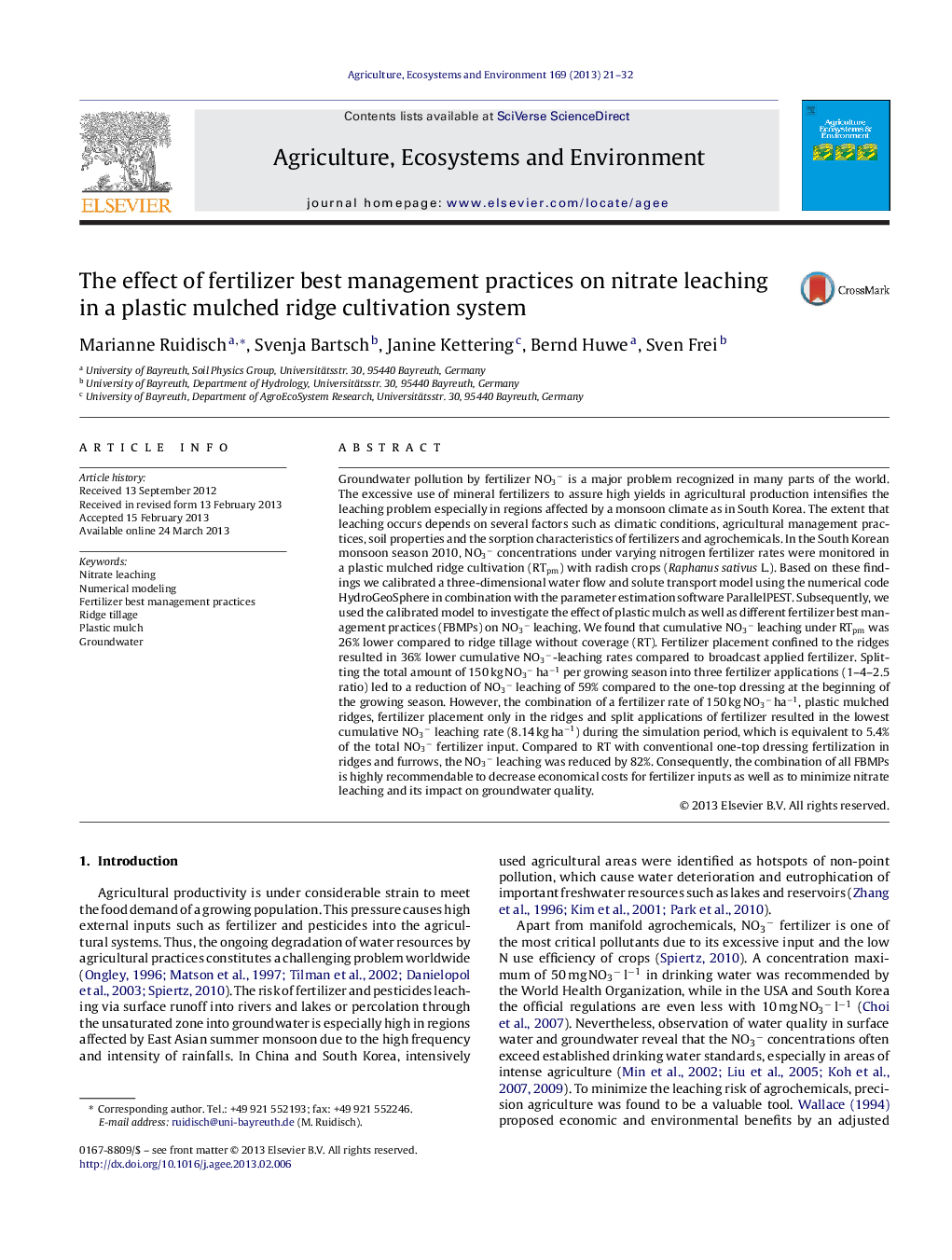| کد مقاله | کد نشریه | سال انتشار | مقاله انگلیسی | نسخه تمام متن |
|---|---|---|---|---|
| 2414301 | 1552083 | 2013 | 12 صفحه PDF | دانلود رایگان |

Groundwater pollution by fertilizer NO3− is a major problem recognized in many parts of the world. The excessive use of mineral fertilizers to assure high yields in agricultural production intensifies the leaching problem especially in regions affected by a monsoon climate as in South Korea. The extent that leaching occurs depends on several factors such as climatic conditions, agricultural management practices, soil properties and the sorption characteristics of fertilizers and agrochemicals. In the South Korean monsoon season 2010, NO3− concentrations under varying nitrogen fertilizer rates were monitored in a plastic mulched ridge cultivation (RTpm) with radish crops (Raphanus sativus L.). Based on these findings we calibrated a three-dimensional water flow and solute transport model using the numerical code HydroGeoSphere in combination with the parameter estimation software ParallelPEST. Subsequently, we used the calibrated model to investigate the effect of plastic mulch as well as different fertilizer best management practices (FBMPs) on NO3− leaching. We found that cumulative NO3− leaching under RTpm was 26% lower compared to ridge tillage without coverage (RT). Fertilizer placement confined to the ridges resulted in 36% lower cumulative NO3−-leaching rates compared to broadcast applied fertilizer. Splitting the total amount of 150 kg NO3− ha−1 per growing season into three fertilizer applications (1–4–2.5 ratio) led to a reduction of NO3− leaching of 59% compared to the one-top dressing at the beginning of the growing season. However, the combination of a fertilizer rate of 150 kg NO3− ha−1, plastic mulched ridges, fertilizer placement only in the ridges and split applications of fertilizer resulted in the lowest cumulative NO3− leaching rate (8.14 kg ha−1) during the simulation period, which is equivalent to 5.4% of the total NO3− fertilizer input. Compared to RT with conventional one-top dressing fertilization in ridges and furrows, the NO3− leaching was reduced by 82%. Consequently, the combination of all FBMPs is highly recommendable to decrease economical costs for fertilizer inputs as well as to minimize nitrate leaching and its impact on groundwater quality.
► Nitrate leaching rates are 26% lower in a plastic mulched ridge cultivation system compared to uncovered ridges.
► Fertilizer placement only in ridges decreases nitrate leaching rates up to 36%.
► Split application decreases nitrate leaching rates up to 59%.
► Combing plastic mulch, a better fertilizer placement and split applications reduces nitrate leaching up to 82%.
► We recommend to apply plastic mulch and fertilizer best management practices for sandy soils in a flat terrain under monsoon climate.
Journal: Agriculture, Ecosystems & Environment - Volume 169, 1 April 2013, Pages 21–32